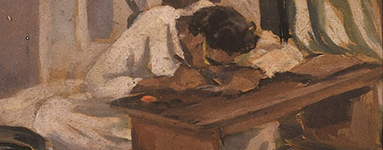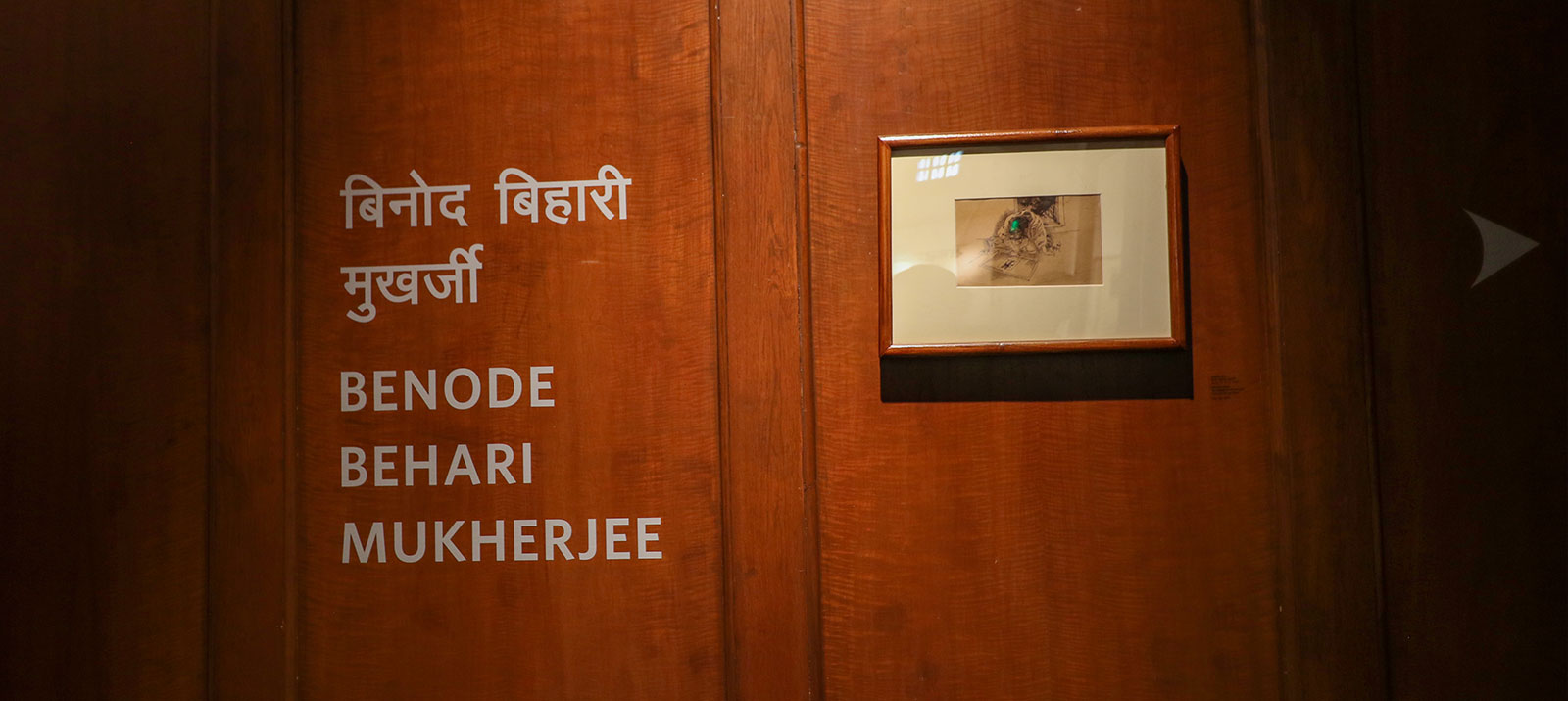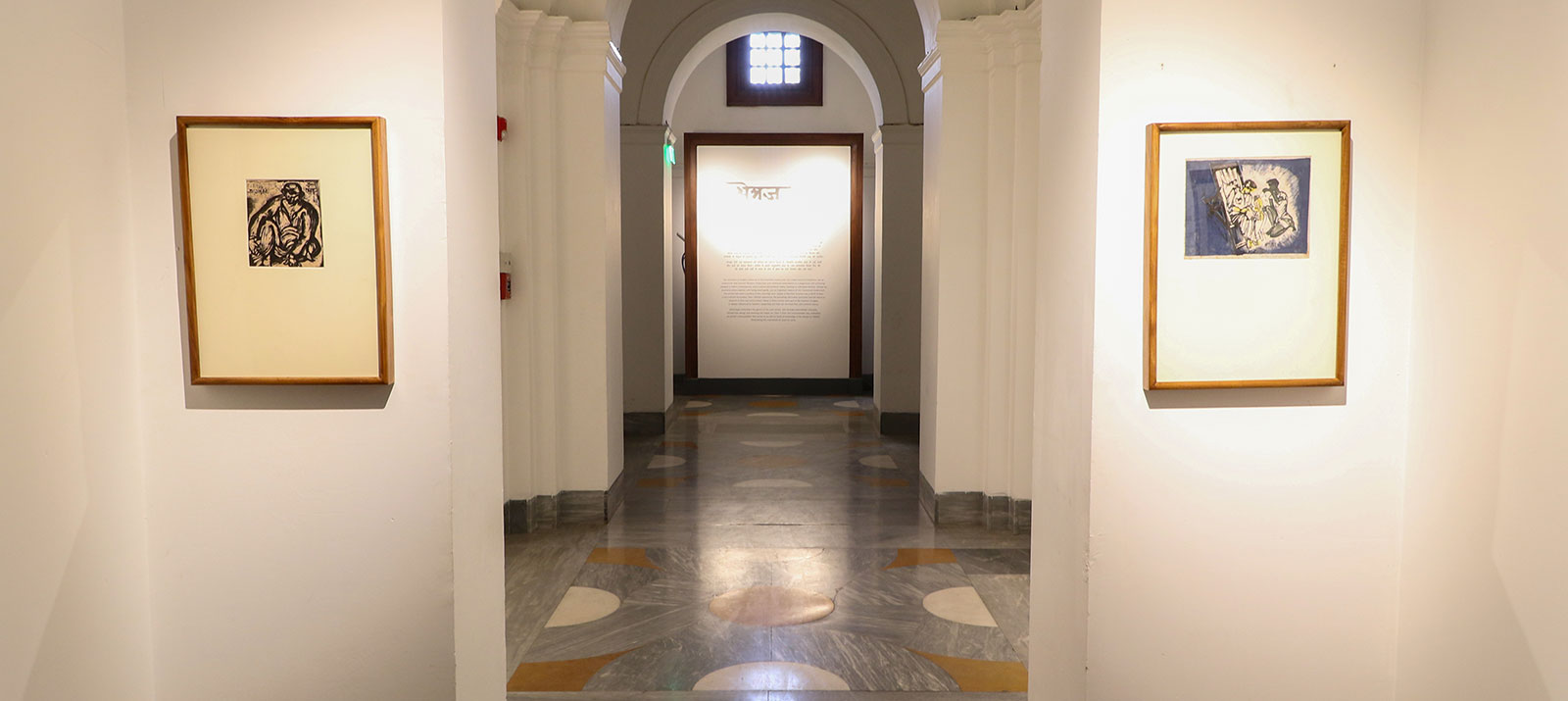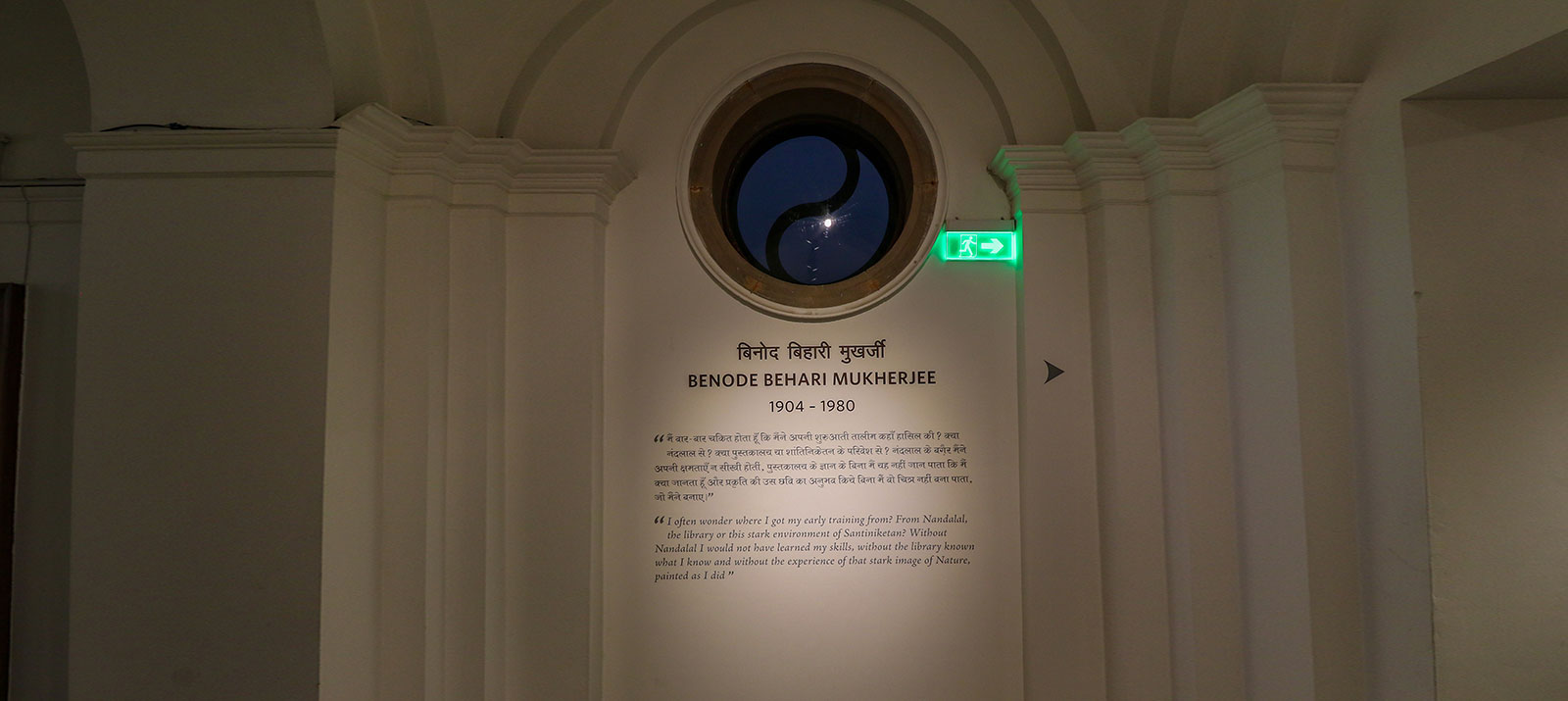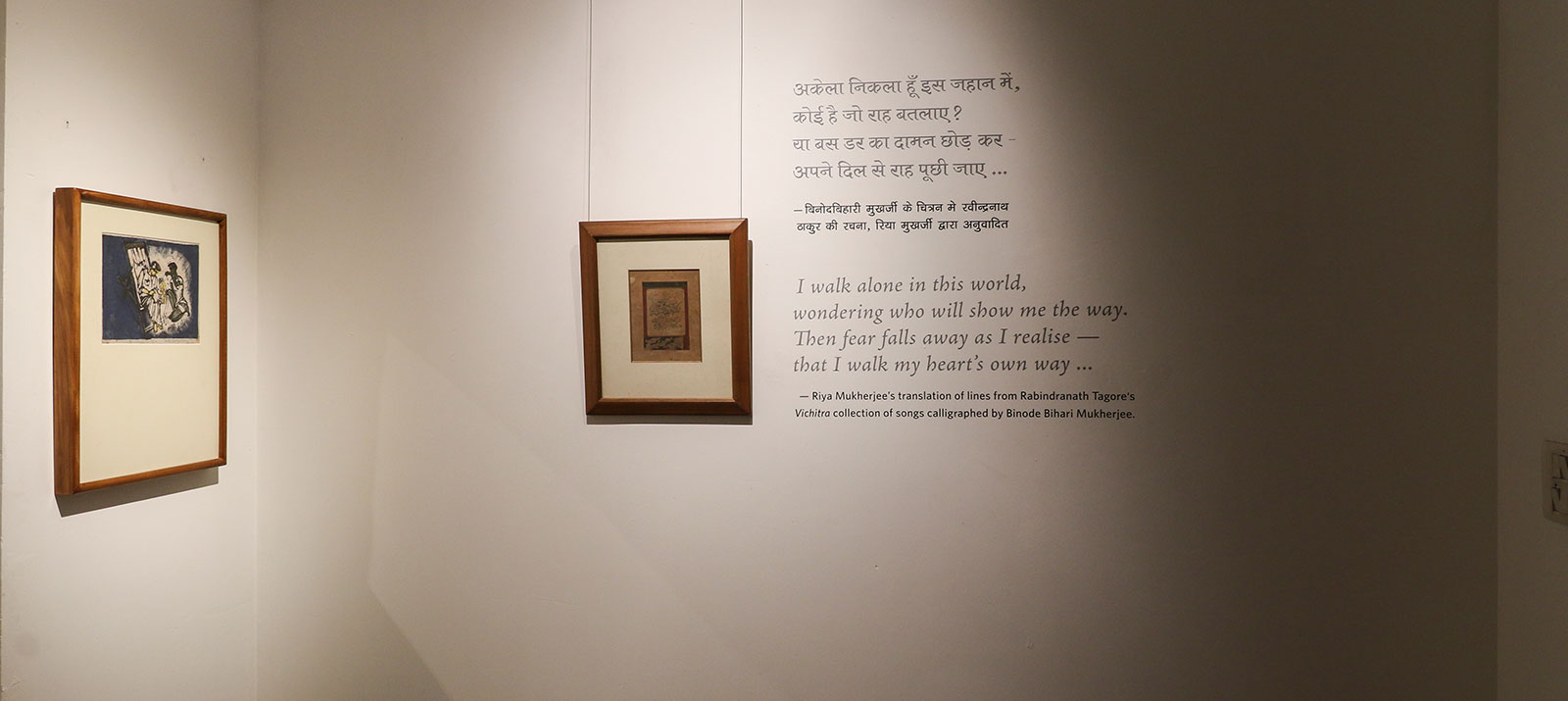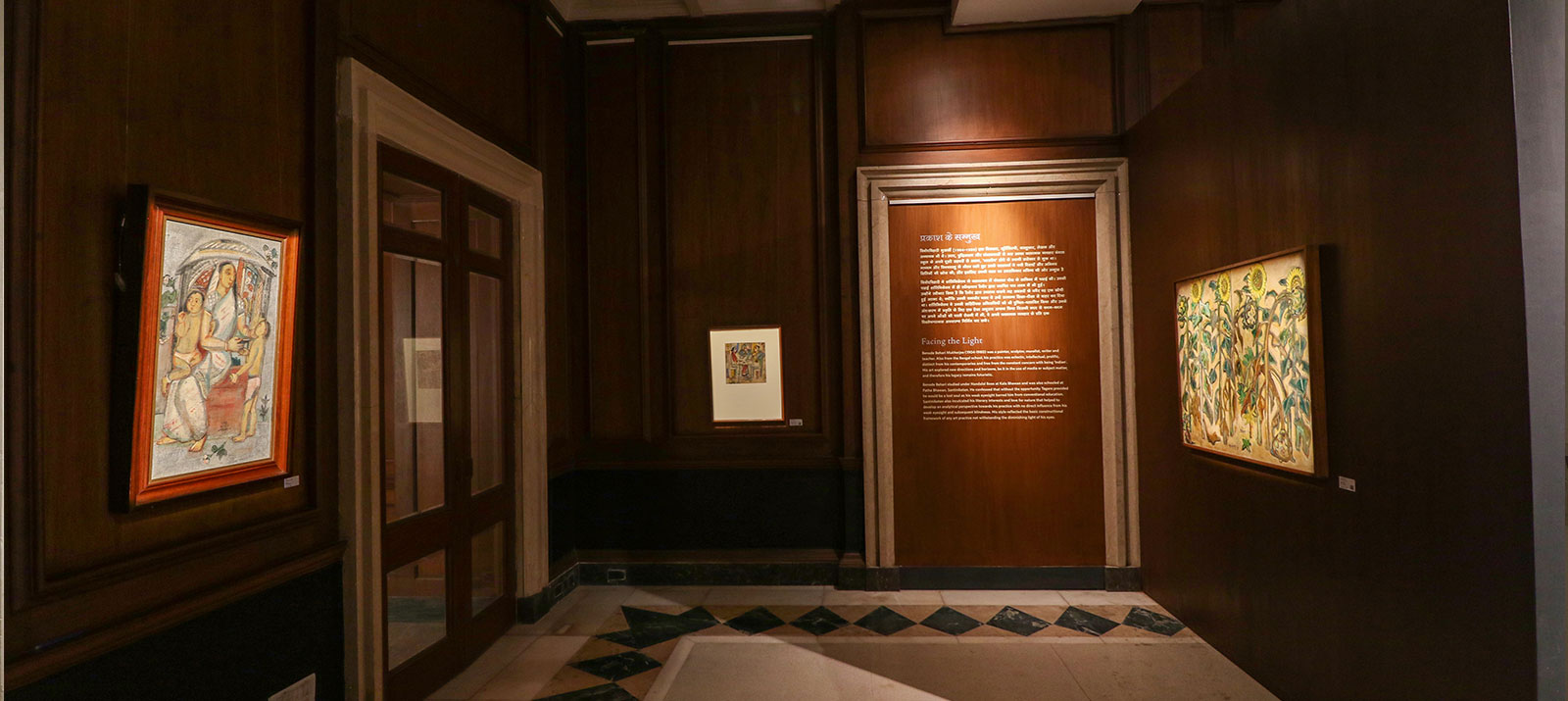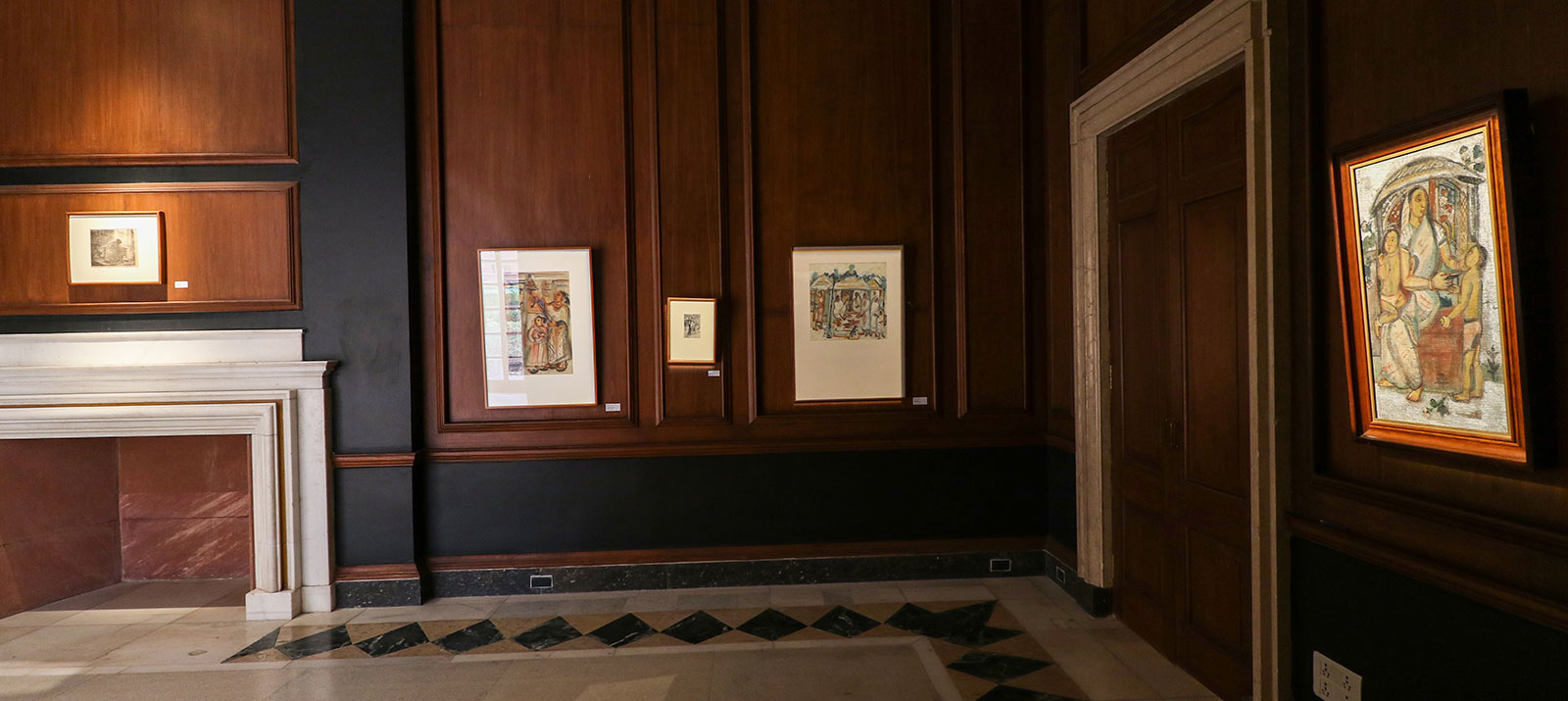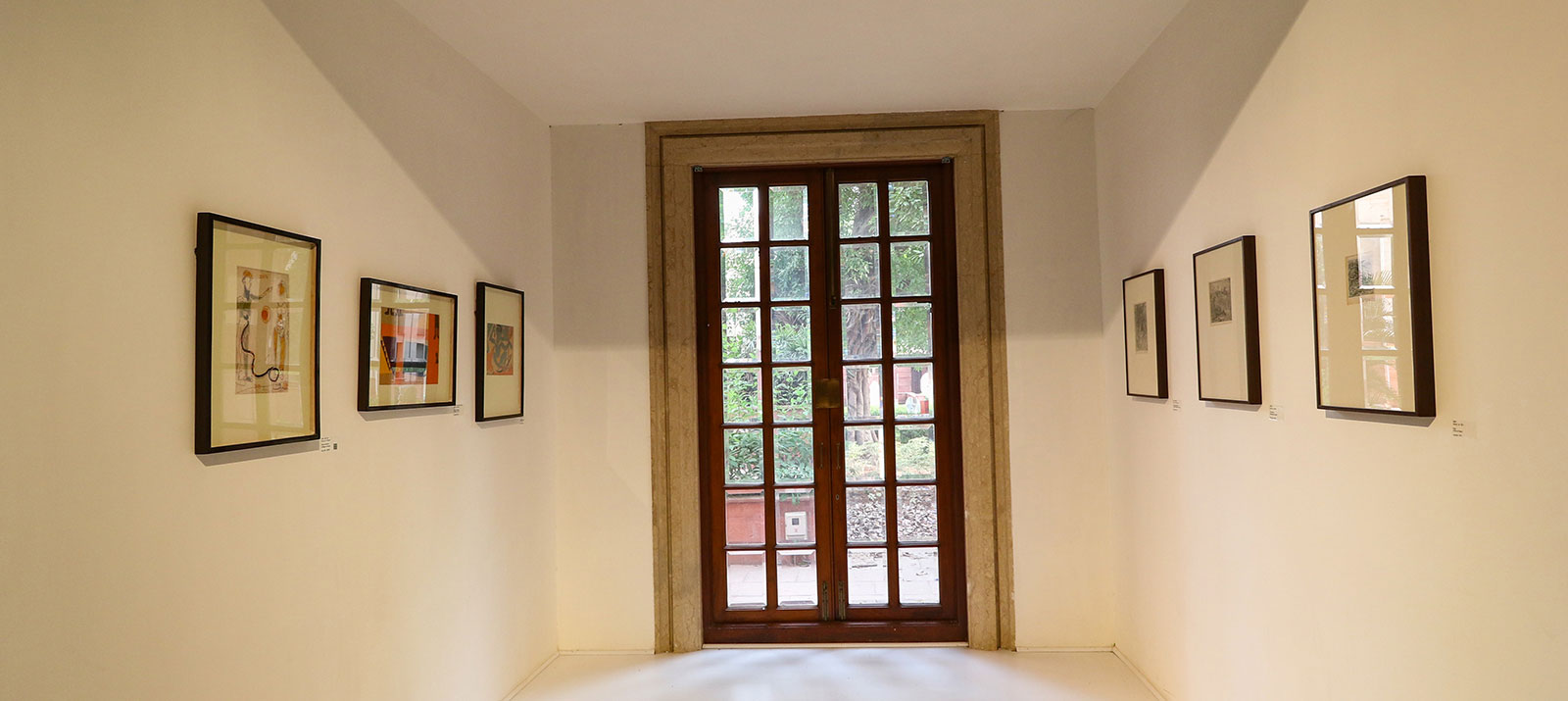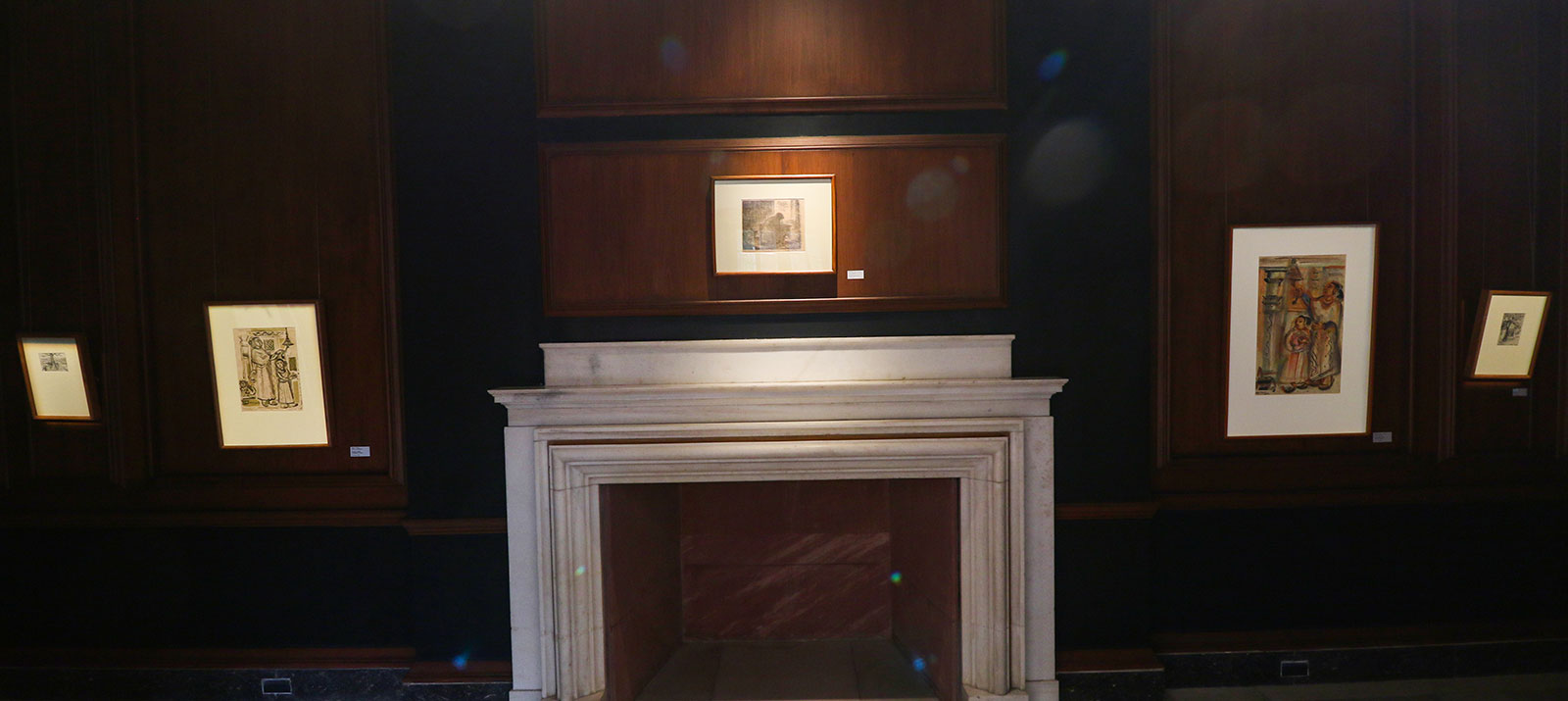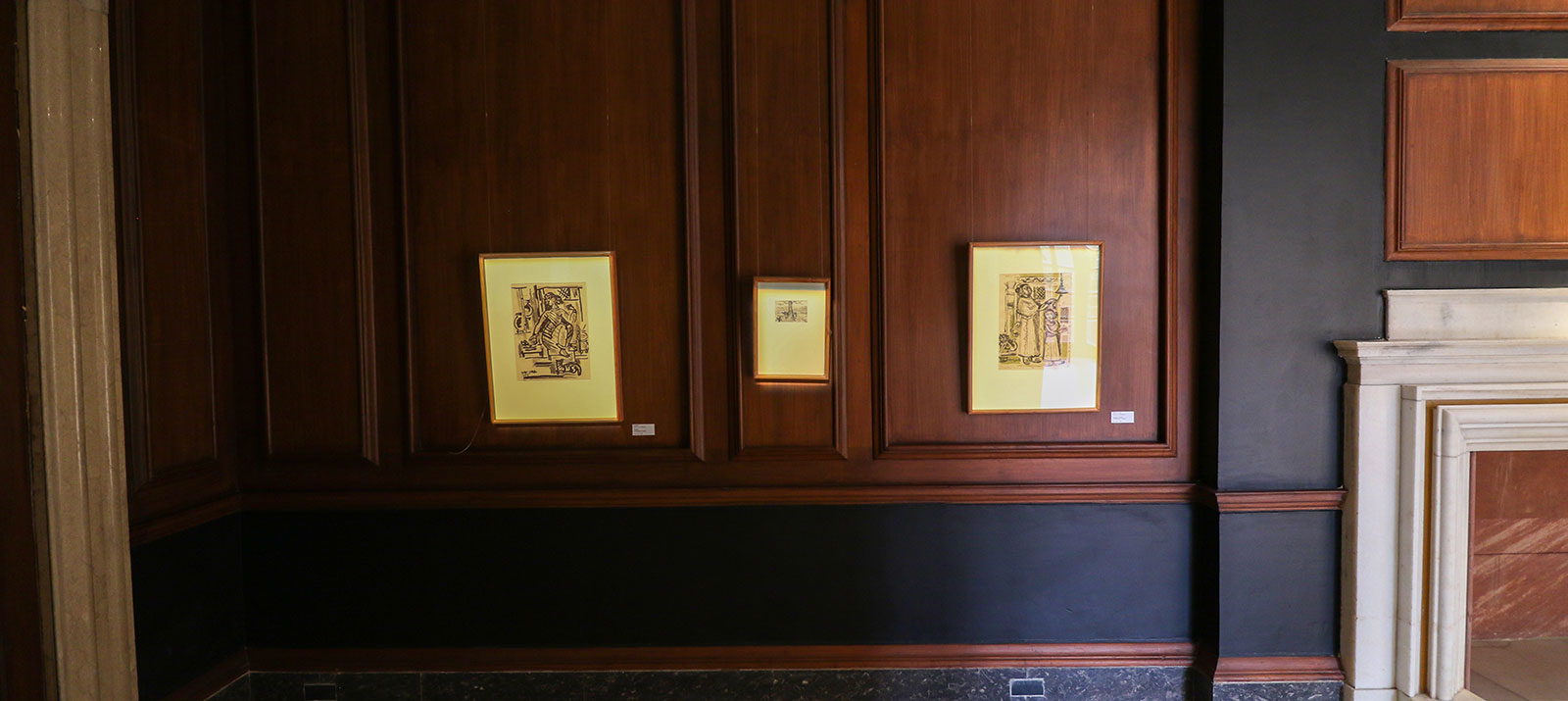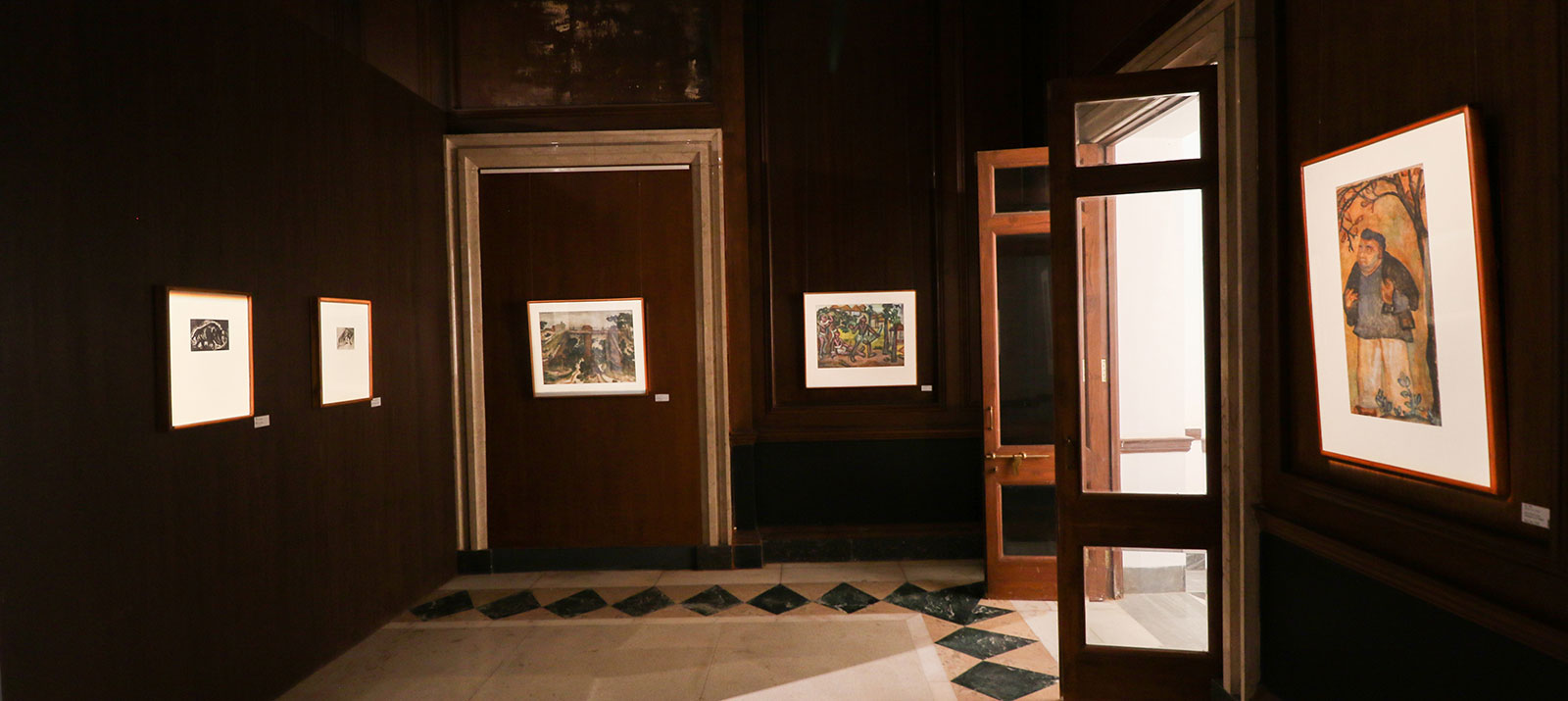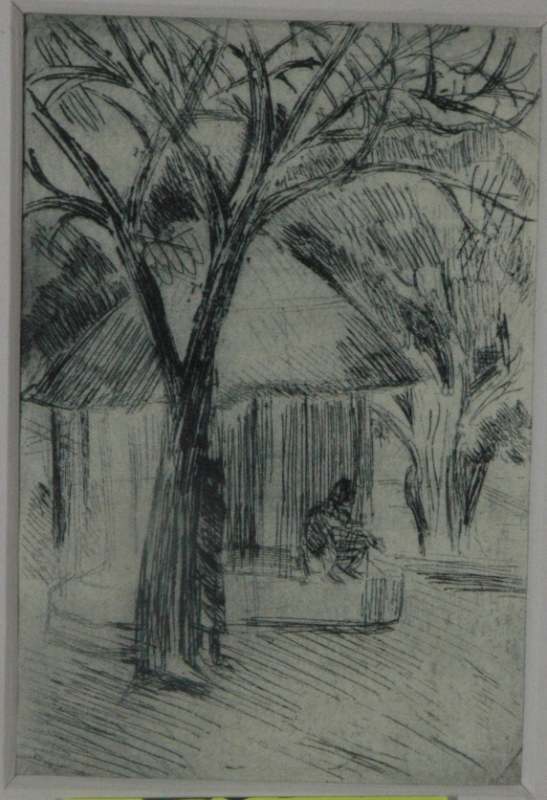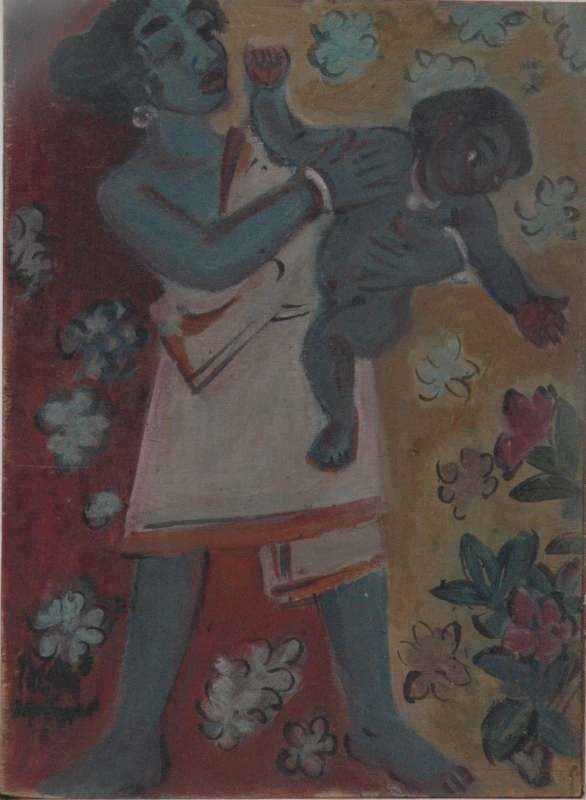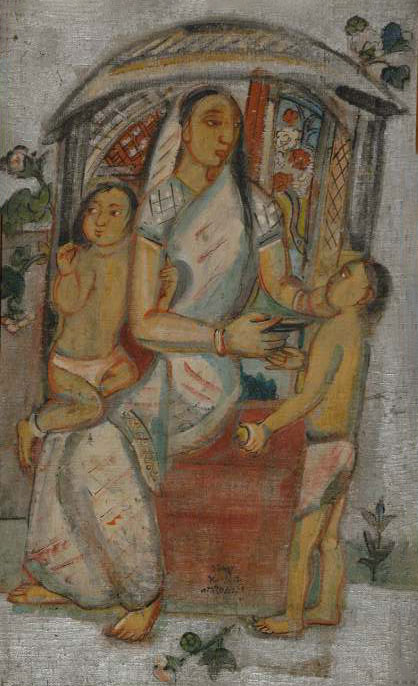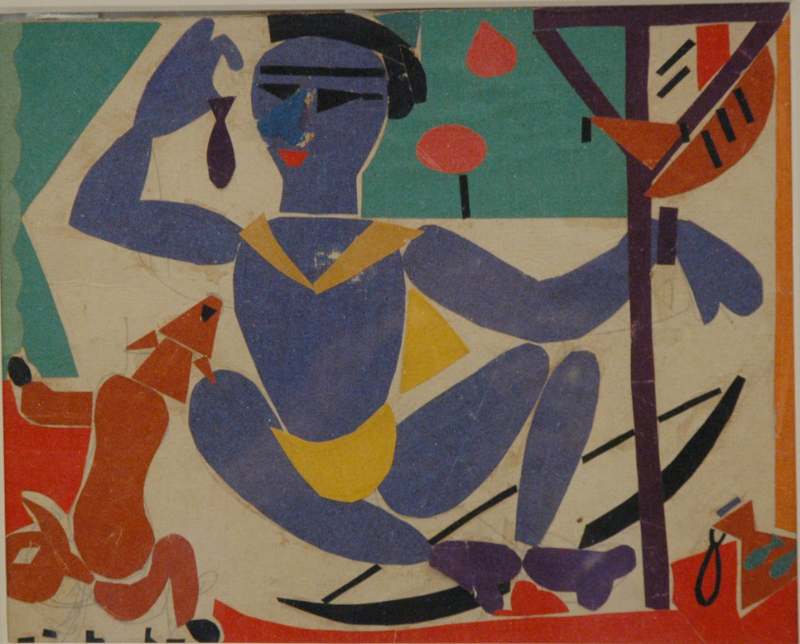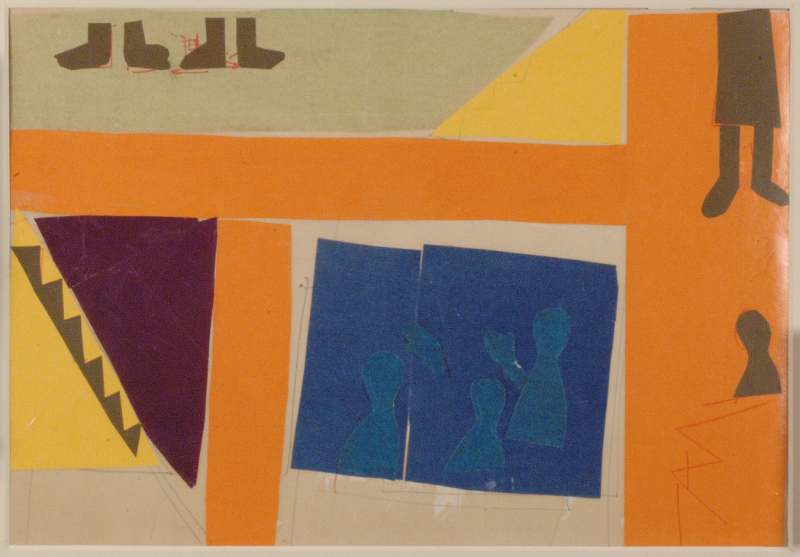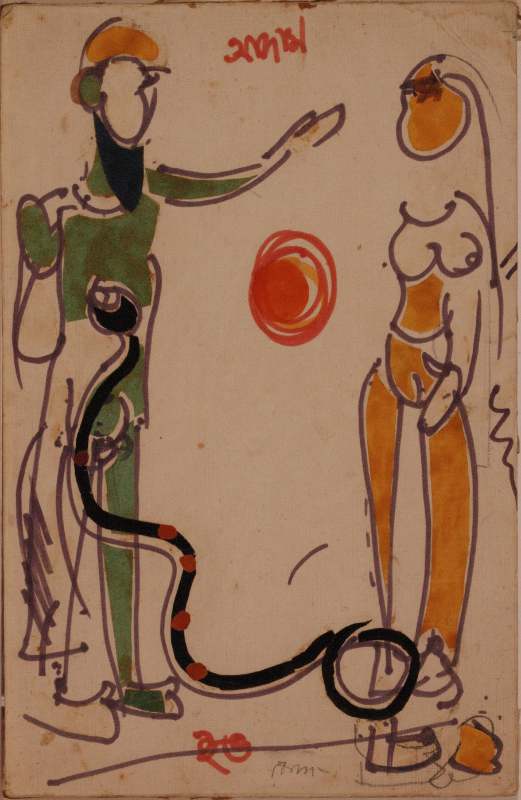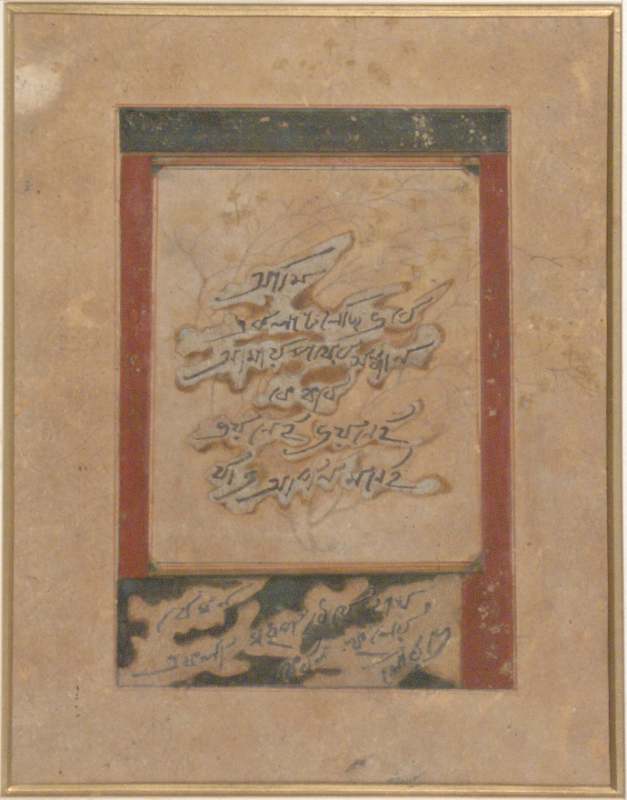Benode Behari Mukherjee
(7th Feb 1904 - 11th Nov 1980)
Tribute to a key figure of contextual modernism
Artist's Profile
"The person who is not roused by a pulsating image, a small touch or sound, can make no sense of the word 'beauty'. A person who neither knows, nor thinks beyond his worldly needs has no use for beauty."
For someone who spent a majority of his life with weak sight and finally became blind at the age of 50 to produce such an enviable body of works in the field of art and literature, not getting deterred by disability, is the very personification of the above mentioned quote, a quote which he once wrote aptly describes him as someone who understands beauty and life, for the works of Binod Behari Mukherjee are themselves representation of beauty and life in all its forms. His work had always overflowed the banks of tradition and were based on his experience and understanding of nature. His murals, which display his understanding and the essence of environmental and architectural nuances, make him one of the stalwarts of Indian visual arts movement.
Childhood And Early Life
Binod Behari Mukherjee was born into a highly literate family in the year 1904. During his childhood, he suffered from an illness that affected his vision, making him blind in one eye and myopic in the other. As such, he was not able to pursue systematic education and instead, had to complete his schooling from a Brahmacharya Ashram. But he developed a passion for painting and in order to hone his talent, he, in 1919, joined Santiniketan's Kala Bhavan for a Diploma in Fine Arts, where Nandalal Bose and Rabindranath Tagore were his gurus, with the former being his art teacher. Mukherjee excelled in painting, a talent that was recognized and encouraged by his teachers. In 1925, he became an art teacher himself at the same institution and taught till 1949, inspiring many students, who would later become celebrated artists like Jahar Dasgupta, K.G. Subramanyan, sculptor & printmaker Somnath Hore, designer Riten Majumdar and filmmaker Satyajit Ray. During this period, along with teaching, Mukherjee also began painting and sculpting extensively, proving this to be one of his most creative periods.
Later Life
Mukherjee also began to travel widely to understand and experience the various forms of nature. In 1949, he was invited to the position of a curator of the Nepal government museum which he accepted. During his stay in Nepal, Mukherjee did a series of drawings and watercolors that captured the rich art of the kingdom. After his return from Nepal in 1951, he taught at the Banasthali Vidyapith, a women's educational center in Rajasthan for a year after finally, settling in Missouri in 1952, along with his wife Leela. Together, they started an art training school over there to provide training to artists and art teachers. The verdant mountains of the Himalayas inspired him to make landscape his major subject once again, creating works that captured the transient aspect of nature with mountains and mists being the dominant motifs. In 1958, Mukherjee joined Shantiniketan's Kala Bhavan again as a faculty and later became its principal. All these years, his eyesight was gradually failing and following an eye operation in 1956, Mukherjee completely lost his sight at the age of 52. But as with all great artists, physical disabilities couldn't stop him from his creative pursuits, even if it was the eyesight, perhaps the most important tool of an artist. But here he proved that it is the inner vision that makes a great artist and he began to paint, draw and sculpt depending only upon this quality to see from the 'inner eye'.
Works
At Shantiniketan, Mukherjee developed a style that veered away from overt symbolism of literary subjects and mythological descriptions to portraying simple representations of his surroundings, capturing the landscape and life in and around the university. He gave more importance to color, line and texture. His sketches, watercolors and drawings were a celebration of life. Apart from nature, Mukherjee took his inspiration from Chinese and Japanese art as well. During this time, he also began experimenting with mural paintings, which he felt were more expressive as murals were intricate and descriptive, allowing him to present his view of life more comprehensively. In 1940, Mukherjee painted a mural in the ceiling of the hostel dormitory, which is considered to be the first of his significant murals. This mural represented the landscape and essence of local villages that had been presented, as a critic puts it, in a 'continuous web of intricate images and unfolds it around the central pond to the four corners of the ceiling, constantly shifting the perspective and focus of the viewer.
With time, Mukherjee adopted different media to work on from sketches, calligraphy and watercolors at the start to tempera on wood and then gradually moving on to silk, textile block prints and finally, moving onto paper cuts. After losing his eyesight, he also started to write, taking the activity more seriously than before, writing about his experiences, history of art education and a series of incisive studies. The latter was published posthumously as a book. But the book that brought him fame as a writer in Bengali was 'Chitrakor' published in 1979, a collection of autobiographical pieces. 'Chitrakor' was landmark work of literature that won two awards in 1980, namely the Rabindra Puraskar and the Bhartiya Bhasha Parishad Award. Satyajit Ray who considered Binod Behari Mukherjee his mentor and inspiration was so impressed by the latter's paper cut works called 'The Inner Eye', that he made a small documentary on this work with the same title in the year 1973. This documentary was instrumental in bring the works of Binod Behari to a wider audience.
Honors And Awards
Vishva Bharti University recognizing his contribution in the fields of arts and literature, in the year 1977, awarded Mukherjee the honorary doctorate degree. He was also honored with Padma Vibhushan in 1974, India's second highest civilian award. In the year 1980, he was also bestowed with the Rabindra Puraskar and the Bhartiya Bhasha Parishad Award for his work 'Chitrakor'.
Death
The legendary painter of Indian modern art, Binod Behari Mukherjee left for the heavenly abode in 1980, at the age of 76. Despite being visually impaired, Mukherjee was never withheld by his inability to see and went on to create some of the most exquisite works that we cherish till date.
Timeline
1904: Binod Behari Mukherjee was born.
1919: Joined Shantiniketan for a diploma in Fine Arts.
1925: Joined his alma mater as a faculty.
1949: Became the curator of the Nepal government museum.
1951: Started to teach at the Banasthali Vidyapith.
1952: Started an art training school in Missouri.
1956: Lost his eyesight after an operation.
1958: Joined the faculty of Shantiniketan.
1973: Satyajit Ray made a documentary on Mukherjee's work 'The Inner Eye'.
1974: Received Padma Vibhushan.1977: Was awarded honorary doctorate degree.
1979: Published the autobiographical 'Chitrakor'.
1980: Awarded two literary prizes; passed away at the age of 76
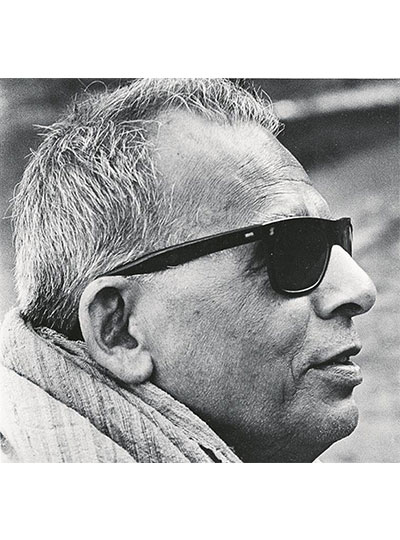
Mentor
Mrs. Temsunaro Tripathi, Director, NGMA
Concept, Design & Development
Shri S S Paul, Information Systems Manager, IT Section
Content Management
IT Section, NGMA
Image Reference for Artist's Profile
B B Mukherjee by E Brunner
Image Reference for Works of Art
NGMA Collection
Image Processing
Shri Deepak Negi
Image Reference for Poem
www.google.com | The Indian Express – The Lifestyle News
Concept Note
Benodebehari Mukherjee (1904-1980) created art that was eclectic, intellectual and prolific. He was a painter, sculptor, muralist, writer and teacher. He created collages, prints and line drawings. His art practice was distinct from what his contemporaries at the Bengal School, were producing.
Born with weak eyesight which subsequently led to blindness in later life, he practiced his craft with no direct influence but his style reflected the basic constructional framework of any art practice. His art had originality, for it was free from a constant concern with being 'Indian', as was the case with other artists from the Bengal School. His art explored new directions and horizons, be it in the use of media or subject matter, and therefore his art legacy continues to be futuristic.
Benodebehari studied under Nandalal Bose at Kala Bhawan, Santiniketan. He was also schooled at the Patha Bhawan, the school created by Rabindranath Tagore at Santiniketan. He confessed that without the opportunity Tagore provided he would be a lost soul, as his weak eyesight barred him from normal education. Santiniketan also fed his literary interests and instilled a love for nature that helped him develop an analytical perspective towards his art practice. Comparing the influence of books, nature and Nandalal Bose on his art, he wrote, 'I often wonder where I got my early training from? From Nandalal, the library or this stark environment of Santiniketan? Without Nandalal I would not have learned my skills, without the library known what I know and without the experience of that stark image of Nature, painted as I did.'
